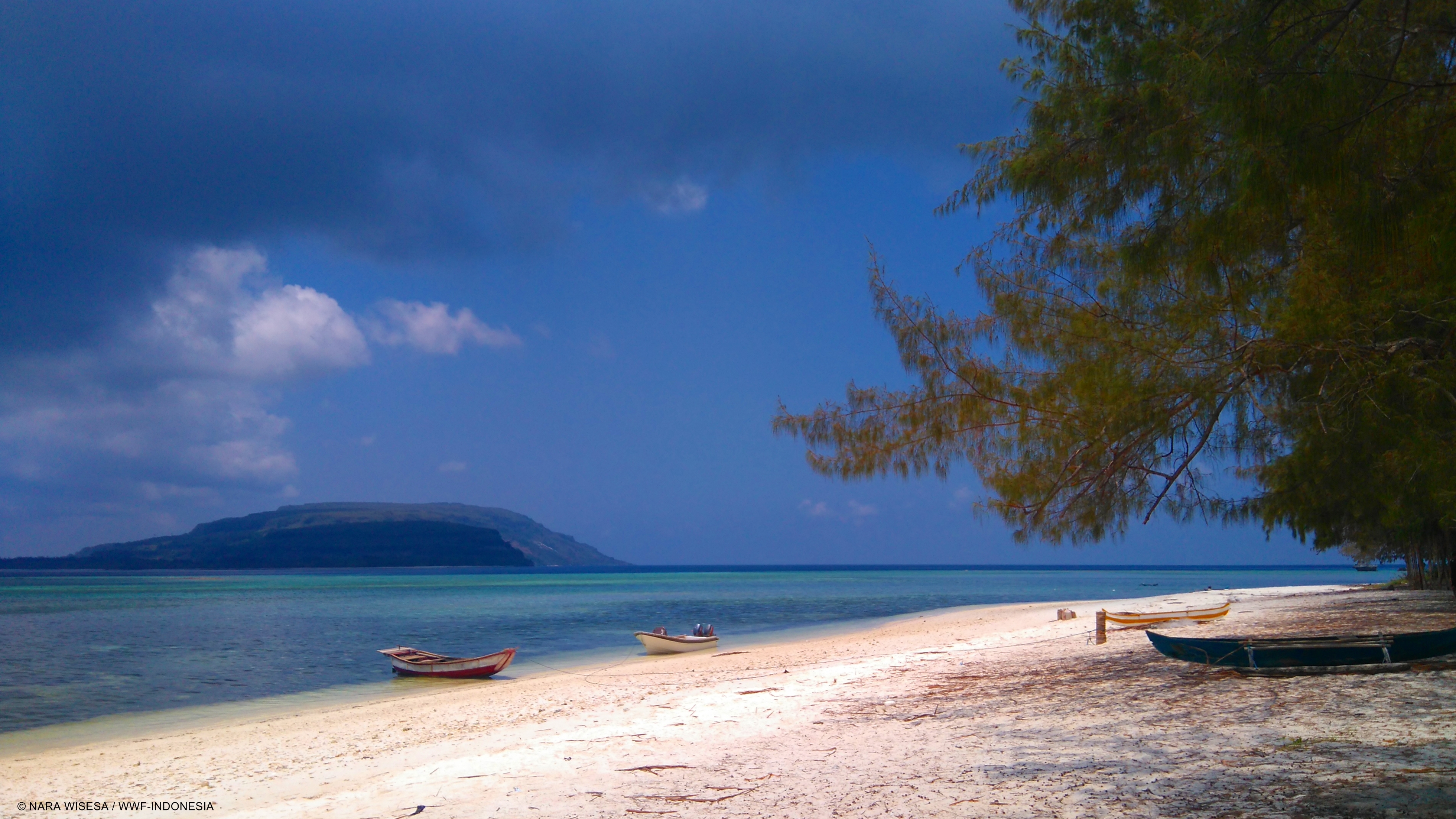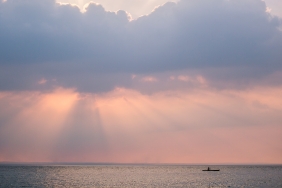#XPDCMBD: ECOLOGICAL FLASHBACK
Author: Estradivari (Marine Conservation Science Coordinator, WWF-Indonesia)
It's the last day of the Sea Team's data collection (11/14). Today, I decided to take ecological data at only one location because in the afternoon the Seven Seas ship had to move quickly across the Banda sea to reach Saumlaki harbor in the morning. The total number of ecological observation sites is 30, in accordance with the initial target, spread from the westernmost (Liran Island) to the easternmost (Dawelor Island) of the Southwest Maluku Regency.
After completing the last dive, the entire Sea Team sat at the front end of the boat deck while enjoying the natural beauty of Babar Island and Dawelor Island. The entire Sea Team exchanged various interesting stories about collecting ecological data for 14 days.
I opened by talking about the results of qualitative monitoring in the 'methi' area based on the results of snorkeling that I had done several times. These 'methi' areas are generally relatively flat reef flats that are heavily influenced by the tides. Coral cover in this 'methi' is very diverse, relatively dense around the shelf, and very random (patchy) and dominated by sand and coral breaks near the shoreline. Coral damage was only encountered occasionally, rather than at high intensity.
Coral reefs are generally located at a depth of 7-9 meters, and most of the bottom contours have a relatively steep slope (about 70-90 degrees) and drop directly to a depth of hundreds of meters. Coral reefs are generally most abundant in the shelf area down to a depth of 20 meters. Tiela (WWF-Indonesia) states that these coral reef beds often form complex three-dimensional topographic structures and provide plenty of space for other marine species to live and hide.
Begin (IPB) said that the diversity of coral genus encountered in the transect was high, reaching more than 60 coral genus. In addition, almost 90% of the hard corals observed were in a healthy condition. Corals that are considered unhealthy are generally caused by natural factors such as fish bites, competition, pigmentation, covered with sediment and algae, and not infected by infectious and deadly diseases.
The underwater realm of Southwest Maluku (MBD) is not only populated by benthic communities, but also by a relatively abundant variety of fish species. Ubun (WCS-IP) recorded more than 350 reef fish species observed within the relatively small transect area of 3.75 hectares, compared to the sea area of MBD District. This number would have increased several times over if the team had taken specialized fish species richness data. Indra (IPB), the most junior diver on the Sea Team, was also continually amazed at the diversity of fish species he encountered at each observation site.
According to both of them, the food web in most of the observation sites is still functioning well, characterized by the discovery of a wide variety of fish species from the lowest trophic level (herbivores) to the highest predators (such as sharks). This indicates that fishing pressure for certain species is not too high.
One thing that keeps the Sea Team excited about data collection is that the method used is exploratory diving, where dives are conducted in locations that have not been determined and where no data and information have been collected before. This allows the Sea Team to find all sorts of interesting "surprises", ranging from challenging topographic shapes, very large and diverse fish populations, finding various species of pennants, very strong ocean currents, or even just finding a boring stretch of coral faults.
The beauty and richness of MBD's marine nature is indeed worthy of praise. This initial observation is also in accordance with the recognition of most of the people interviewed by the Land Team, namely the condition of the MBD coral reef ecosystem is still relatively good. Damage to coral reefs can be found in some locations but not in a high intensity, possibly caused by fish bombing by andon fishermen or due to the west season which causes sea water to stir and destroy coral reefs. The sustainability of nature and marine resources needs to be maintained and preserved so that it can still be enjoyed for generations.
Unfortunately the exciting conversation had to come to an end as the Social Team returned to the ship. We will do one last activity before leaving for Saumlaki and ending the expedition activities, which is enjoying the beautiful beach on Dawelor Island while doing a team photo.
See you Southwest Maluku!





